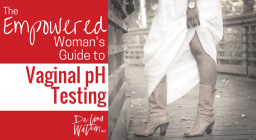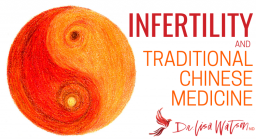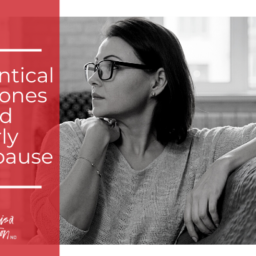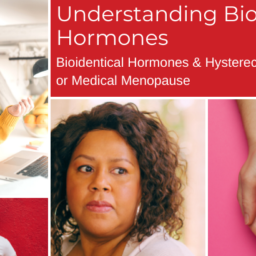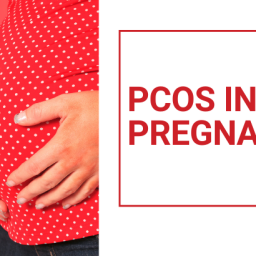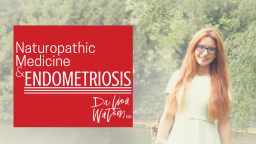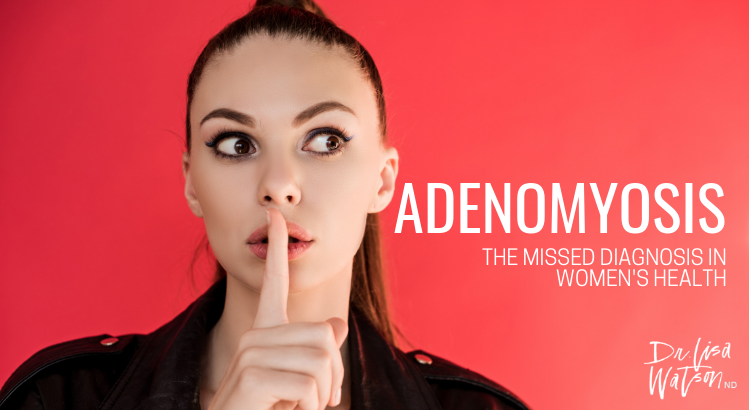
In the realm of women’s health, most women have heard of PCOS, endometriosis, or fibroids. But mention a diagnosis of adenomyosis and you’ll be met with blank stares. Why is one of the most common uterine conditions something most women have never even heard of?
Adeno-whaty-osis?
Adenomyosis is a condition that is very similar to endometriosis. In adenomyosis the inner layer of the uterus, the endometrium, pushes into the muscular layer of the uterus, the myometrium and decides to stay there. Endometriosis occurs when those same endometrial cells set up shop outside the uterus – on the outer walls of the uterus, the ovaries, the fallopian tubes and throughout the abdominal cavity.
Unlike endometriosis, in most cases of adenomyosis, the endometrial cells that are out of place are not functional – they don’t respond to the hormones of our menstrual cycle and go through the paces of shedding blood each month.
A Common(ly Missed) Diagnosis
We don’t really have a good estimate of how many women are currently experiencing adenomyosis. Unlike many other gynecological conditions, adenomyosis diagnosis criteria aren’t as well established internationally. Some studies estimate up to 20-30% of reproductive aged women may have adenomyosis.
Up until recently the only way to diagnose adenomyosis was to do a hysterectomy, and then take a look at the layers of the uterus. Now (thankfully) we can diagnose adenomyosis through an MRI.
Symptoms of Adenomyosis
Half of women with adenomyosis will never have symptoms that are significant enough for them to seek care. They may notice they are having heavier or more painful periods, but they often chalk it up to getting older. Women who do experience symptoms tend to be older – between the ages of 35 and 50. Adenomyosis is rare in postmenopausal women, except when the drug tamoxifen is involved.
Classic symptoms of adenomyosis are:
- Painful periods
- Heavy periods
- Abdominal pressure and bloating
- Pain during sex
In adenomyosis the uterus is also enlarged and lumpy, but most women wouldn’t notice this until it gets really enlarged.
If It’s Not Adenomyosis
The most common misdiagnosis for adenomyosis is uterine fibroids. Another type of benign (non cancerous) growth in the uterus, fibroids can grow in the wall of the uterus, on the outside wall of the uterus, just under the uterine lining or hang into the uterus. Both adenomyosis and fibroids cause heavy and painful periods. And some unlucky women can have both these conditions at the same time.
Treating Adenomyosis
Adenomyosis is more common as women get older, and the potential for estrogen dominance increases. Many women respond well to approaches for reducing estrogen dominance such as DIM, I3C, calcium d-glucarate, B-vitamins, probiotics and bioidentical progesterone. Other options include treatments that reduce heavy periods, such as shepherd’s purse and ginger. Anti-inflammatories such as turmeric and ginger may also be helpful for reducing the cramping associated with adenomyosis.
Most importantly, you should consider working with a Naturopathic Doctor or functional medicine practitioner to develop a strategy for managing your adenomyosis symptoms, especially if you want to prevent a hysterectomy down the road. Working with someone who can guide you to optimal hormone balance can be life-changing for women with adenomyosis, and the consequences of hormone balance (better moods, more libido, more energy) can help you live the fired up life you deserve.
Disclaimer
The advice provided in this article is for informational purposes only. It is meant to augment and not replace consultation with a licensed health care provider. Consultation with a Naturopathic Doctor or other primary care provider is recommended for anyone suffering from a health problem.
Selected References
Taran FA, Stewart EA, Brucker S. Adenomyosis: Epidemiology, Risk Factors, Clinical Phenotype and Surgical and Interventional Alternatives to Hysterectomy. Geburts Frau. 2013;73(9):924-931. https://www.ncbi.nlm.nih.gov/pmc/articles/PMC3859152/
Naftalin J, Hoo W, Pateman K, Mavrelos D, Holland T, Jurkovic D. How common is adenomyosis? A prospective study of prevalence using transvaginal ultrasound in a gynaecology clinic. Human Repro. 2012;27(12):3432-3439.



